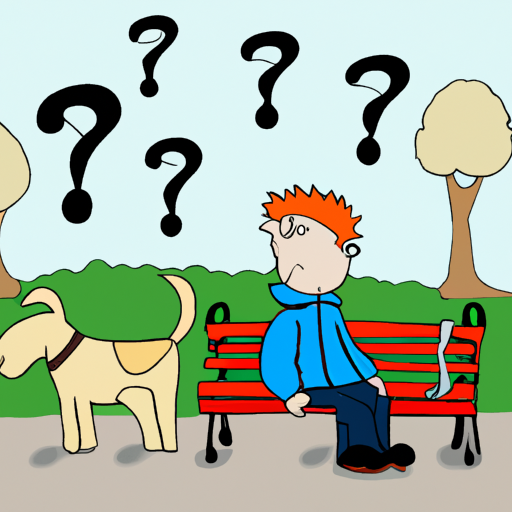Everyone loves dogs, or so they say. But what happens when it seems like man’s best friend doesn’t quite feel the same about you? It can be disheartening to feel like dogs don’t like you, but there’s usually more to the story than meets the eye.
Let’s dive deep into the world of dog behavior and human-dog interactions to understand why it might seem like dogs don’t like you and what you can do about it.
Table of Contents:
1. Understanding Dog Behavior
2. Common Reasons Why Dogs Might Not Like Someone
3. How to Improve Your Relationship with Dogs
4. Frequently Asked Questions
Key Takeaways:
– Dogs’ behavior can be influenced by many factors, including their past experiences, their environment, and their perception of you.
– Understanding and respecting a dog’s boundaries can help improve your relationship with them.
– Patience, consistency, and positive reinforcement are key when trying to win over a dog’s trust.
Understanding Dog Behavior
Dogs, like humans, have their own personalities, likes, and dislikes. They also have their own unique ways of communicating. Understanding dog behavior is essential when trying to figure out why a dog might not seem to like you.
One useful resource for learning about dog behavior is the American Society for the Prevention of Cruelty to Animals (ASPCA). Here, you’ll find a wealth of information on common dog behaviors, what they mean, and how to respond to them.
Common Reasons Why Dogs Might Not Like Someone
There are myriad reasons why a dog might act standoffish or seem to dislike someone.
1. Past Experiences: Dogs can develop negative associations based on their past experiences. If a dog has had a bad experience with someone who looks, smells, or behaves like you, they might react negatively towards you because of those associations.
2. Fear or Anxiety: Dogs can exhibit fear or anxiety in response to a wide range of stimuli. Some dogs might be afraid of men, while others might be anxious around people wearing hats or carrying umbrellas.
3. Lack of Socialization: Dogs who haven’t been properly socialized might be wary or fearful of unfamiliar people. This can make it seem like they don’t like you, when in reality they’re just unsure of how to interact with you.
4. Your Behavior: Dogs are very perceptive and can pick up on subtle cues in your behavior. If you’re nervous, aggressive, or inconsistent in your interactions with them, they might respond negatively.
One way to identify potential triggers for a dog’s negative behavior is by observing them in a variety of situations. This article on One Top Dog provides some helpful tips for doing just that.
How to Improve Your Relationship with Dogs
Just because a dog seems to dislike you now doesn’t mean that has to be the case forever. There are several strategies you can employ to improve your relationship with dogs.
1. Respect Their Boundaries: Dogs, like people, have personal boundaries. Respecting these boundaries can go a long way towards building a positive relationship.
2. Use Positive Reinforcement: Rewarding positive behavior with treats, praise, and play can help build a positive association with you in the dog’s mind.
3. Be Patient and Consistent: Change doesn’t happen overnight. Be patient with the dog and consistent in your behavior towards them.
4. Seek Professional Help: If you’re struggling to improve your relationship with a dog, consider seeking the help of a professional dog trainer or behaviorist. They can provide insight into the dog’s behavior and offer guidance on how to improve your relationship.
For more tips on interacting with dogs, check out this article on One Top Dog.
Frequently Asked Questions
1. Why does a dog growl at me when I approach?
A dog might growl when you approach if they’re feeling threatened or scared. It’s important to respect their space and not force interaction.
2. What should I do if a dog seems to dislike me?
If a dog seems to dislike you, it’s important to remain calm and patient. Avoid forcing interaction and try to build positive associations through positive reinforcement.
3. Can a dog’s behavior change over time?
Yes, a dog’s behavior can change over time, especially with consistent training and positive experiences.
4. How can I tell if a dog is afraid?
Signs of fear in dogs can include trembling, tail tucking, avoidance behaviors, and more. For more information on fear signs in dogs, visit this page on One Top Dog.
Remember, every dog is an individual with their own personality and history. Understanding and respecting their needs can go a long way towards building a positive relationship. Be patient, be consistent, and don’t be afraid to seek help if you need it. With time and effort, you can turn “why do dogs not like me?” into “how did I become a dog’s best friend?”



